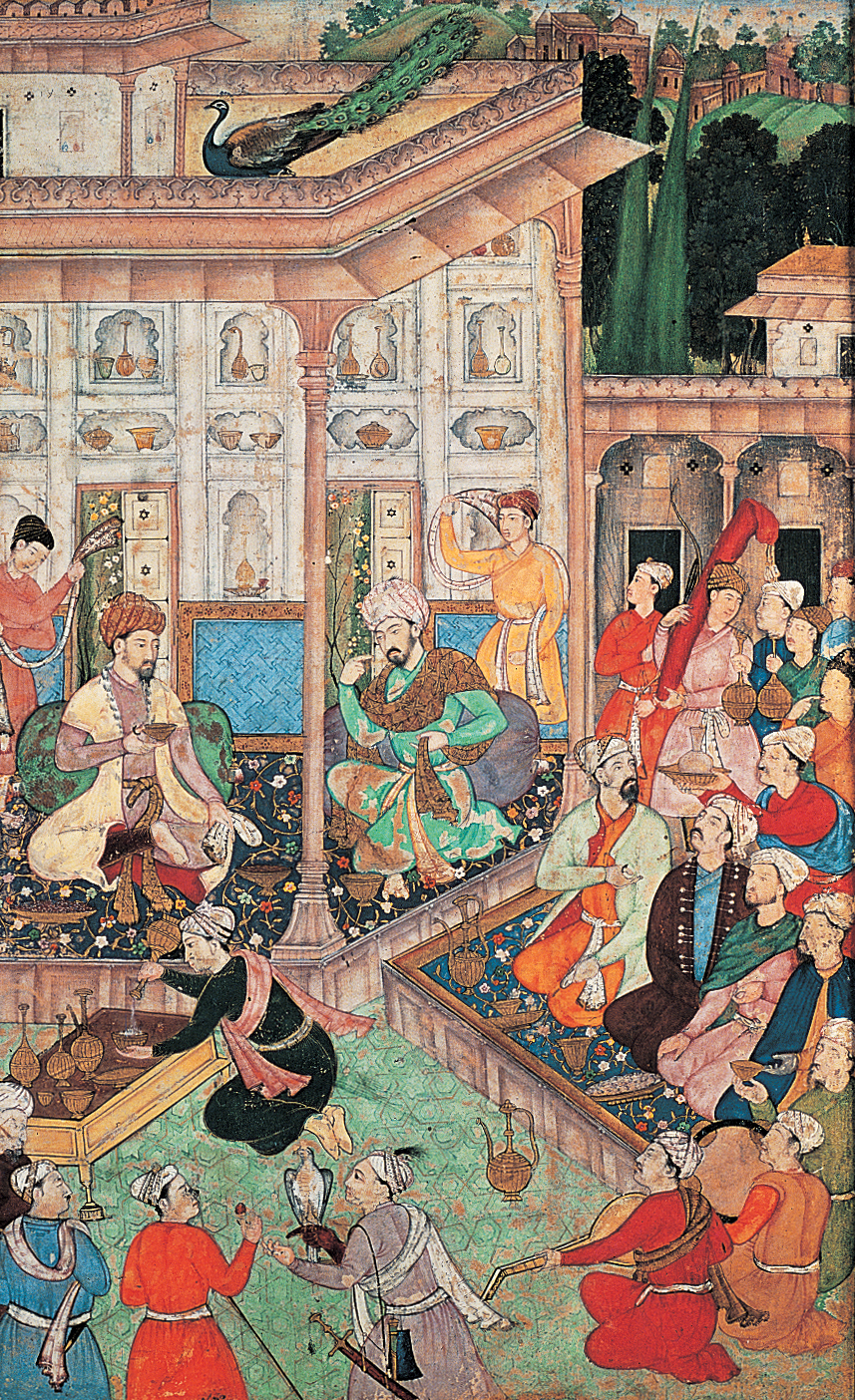Mughal << MOO guhl >> Empire, also called the Mogul Empire, ruled most of India in the 1500’s and 1600’s. Life in Mughal India set a standard of magnificence for its region of Asia, and the empire had order and stability. The centralized government of the empire provided a model for later rulers of India. A distinctive culture developed that blended Persian and Indian elements, and the Persian language became widely used.

Babur, a prince from central Asia, founded the Mughal Empire in 1526. His grandson Akbar established its governmental structure. Akbar, who ruled from 1556 to 1605, controlled most of what are now north and central India, Afghanistan, Bangladesh, and Pakistan. Jahangir, Akbar’s son, ruled from 1605 to 1627 and was a patron of Persian culture. His son Shah Jahan reigned from 1628 to 1658. He encouraged architecture and built the famous Taj Mahal as a tomb for his wife. Shah Jahan’s son Aurangzeb took the throne from his father in 1658. Aurangzeb attempted to expand the empire and to control rebellions within it.

The Mughal emperors were Muslims who ruled a largely Hindu nation. Under Akbar, some Hindu warriors served as Mughal generals and governors. Other Hindus were administrators and clerks. Later, Aurangzeb reimposed a tax on the Hindus that had been abolished by Akbar and destroyed many of their temples. The Marathas, Hindu warriors of western India, revolted and seriously weakened the empire.
The Mughal Empire began to break up soon after Aurangzeb’s death in 1707. Mughals continued to rule a declining kingdom centered at Delhi until Britain deposed the last emperor in the mid-1800’s.
